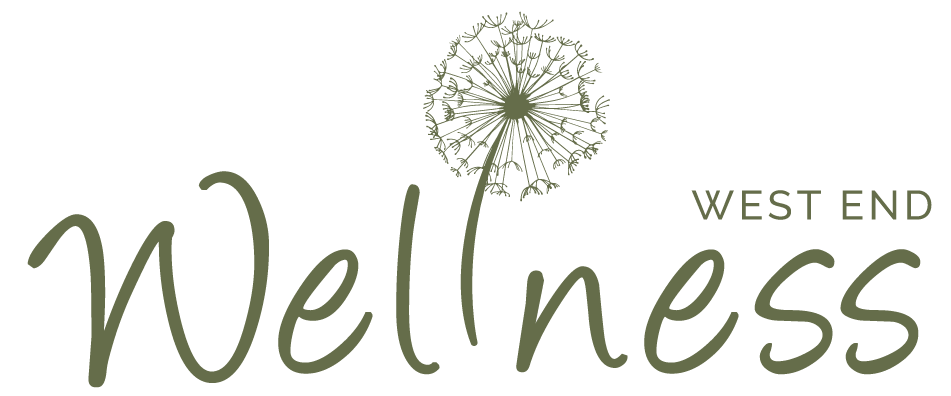Is Massage Good for Neck Pain? Here’s What You Should Know
Table of Contents Show
Quick Summary
Neck pain is a common issue that can affect your daily comfort, posture, and mobility. This article examines the causes of neck pain, the benefits of massage therapy in providing relief, and the types of massage most effective for alleviating neck and shoulder tension.
You’ll also learn what to expect during a session, when massage may not be the right option, and simple, everyday ways to prevent neck pain from returning. Whether you're in pain or seeking to prevent it, this guide helps you make informed, confident choices.
TL;DR – Is Massage Good for Neck Pain?
Yes—massage therapy can effectively reduce neck pain caused by tension, posture, or stress.
It improves circulation, loosens tight muscles, and relieves pressure in the neck and shoulders.
Techniques like trigger point therapy and myofascial release are commonly used.
Regular sessions can improve range of motion and prevent pain from returning.
Massage is a safe, drug-free way to manage and relieve chronic or acute neck discomfort.
You know that feeling when you wake up and something just isn’t right in your neck?
Maybe it’s stiff, maybe it aches, or maybe it feels like turning your head is suddenly a full-body workout.
Sometimes it’s because you slept funny. Other times, it’s the hours you spent hunched over your laptop, the way you sit in traffic without realizing your shoulders are practically touching your ears, or the fact that your phone might as well be glued to your jawline.
Neck pain has a way of slipping into your life without warning. It doesn't always announce itself with a dramatic injury.
Often, it's the result of repetitive habits we barely notice. In a busy place like Vancouver, where people are always on the move, it’s easy to brush it off until it starts affecting how you work, how you sleep, or how you feel.
This article is here to help you understand why your neck might be hurting and how massage therapy can offer more than just temporary relief.
We’ll talk about the causes, the benefits of targeted treatment, what to expect from a session, and how to know when it’s time to get help.
Let’s take a closer look at what’s going on and how you can start feeling better.
What Causes Neck Pain in the First Place?
Neck pain isn’t always dramatic. It doesn’t have to come from a sports injury or an accident to be real or disruptive. In fact, for most people, it develops gradually, often from everyday habits that we barely notice until the tension sets in.
Think about how often you look down at your phone, or how your shoulders slowly creep up toward your ears when you're stressed. Maybe you’ve been working from your kitchen table or using a pillow that’s too soft. Over time, these small things add up, straining the muscles and joints in your neck.
Some of the most common causes of neck pain include:
Poor posture, especially from sitting for long hours
Stress and tension, which tighten the muscles around the shoulders and neck
Sleeping in awkward positions or using unsupportive pillows
Carrying heavy bags or backpacks
Previous injuries that never fully healed
Repetitive movements, like lifting or turning the head the same way
Living in a busy city like Vancouver, where people are constantly on the go, many of us don’t even realize we’re holding tension in our necks until the discomfort becomes impossible to ignore. Whether it's a dull ache that lingers all day or a sharp pain when you turn your head, your body is trying to get your attention.
Can Massage Therapy Help with Neck Pain?
The short answer? Yes, it can — and for many people, it makes a noticeable difference.
Massage therapy isn’t just about relaxing (though that’s a nice bonus). It’s a hands-on approach that helps target the root causes of neck pain, particularly when it’s associated with muscle tension, poor posture, or stress.
When a registered massage therapist (RMT) works on your neck and shoulders, they’re not just kneading muscles at random. They’re releasing areas of tightness, improving blood flow, and helping your nervous system shift out of “fight or flight” mode. Over time, this can reduce stiffness, restore mobility, and help you feel more at ease in your body.
Here’s how massage therapy can support neck pain relief:
Relieves muscle tension caused by stress or poor posture
Improves circulation to promote healing and reduce inflammation
Increases range of motion by gently loosening tight muscles
Reduces headaches that often go hand-in-hand with neck issues
Encourages relaxation, which can lower the stress that fuels pain in the first place
As a holistic clinic in Vancouver, we often see clients who didn’t realize just how much tension they were holding until they got on the table.
Whether your pain stems from long hours at a desk, training at the gym, or simply life catching up with you, massage therapy can be a crucial part of your recovery and wellness routine.
Benefits of Massage Therapy for Neck and Shoulder Pain
Neck pain rarely shows up on its own. It often brings a few unwelcome guests—tight shoulders, tension headaches, and that heavy, dragging feeling that makes it hard to focus or stay comfortable. Massage therapy offers a way to gently unwind those patterns and give your body a chance to reset.
Here are some of the most common ways massage can help:
-
Chronic tension in the neck and shoulders can restrict movement and cause pain that spreads down your back or up into your head. Massage therapy works directly on these tight spots, helping the muscles soften and relax.
-
When your muscles are constantly bracing, your body can get stuck in a forward head position or hunched shoulders. Regular massage helps bring awareness and relief to these areas, making it easier to sit, stand, and move in a more natural way.
-
Good circulation is key for healing. Massage increases blood flow to affected areas, which can help reduce inflammation and bring fresh oxygen and nutrients to tense muscles.
-
Stress has a way of settling into our neck and shoulders. Massage helps shift your nervous system into a calmer state, giving your body a break from the constant tension and mental fatigue.
-
When the neck is stiff, even basic movements like turning your head while driving can feel limited or uncomfortable. Massage can gradually restore flexibility by targeting the muscles that restrict movement.
When all of these benefits work together, it’s not just about temporary relief—it’s about helping your body move better, feel better, and recover faster.
What Types of Massage Are Best for Neck Pain?
Not all massage styles work the same way—and when it comes to treating neck pain, some techniques are especially helpful. The right approach depends on what’s causing your discomfort, how long it’s been going on, and how your body responds to touch.
Here are a few massage techniques commonly used to treat neck pain:
-
This is a gentle, full-body massage that uses long strokes and light pressure. It’s ideal if your neck pain is related to stress or if you’re new to massage therapy and prefer a lighter touch. It promotes relaxation and encourages circulation without deep pressure.
-
If your pain is linked to long-term tension or poor posture, deep tissue massage can be more effective. It targets the deeper layers of muscle and connective tissue to release knots and chronic tightness that might be limiting your movement.
-
This technique focuses on specific “trigger points” that refer pain to other areas, like a tight spot in your shoulder that causes neck pain. Applying pressure to these points can release the tension and ease the discomfort.
-
This gentle, sustained pressure of the myofascial release technique works on the fascia—the connective tissue that surrounds and supports muscles. It’s especially useful if your neck feels stiff or restricted but sensitive to deep pressure.
There’s no one-size-fits-all when it comes to massage for neck pain. The best results often come from a mix of techniques that match your body’s needs and your comfort level.
If you’re not sure what’s right for you, that’s okay. Most registered massage therapists will adjust their approach as the session unfolds, checking in with you and paying attention to how your muscles are responding.
At West End Wellness, our RMTS work with you to find the right rhythm, blending methods like deep tissue, trigger point, and Swedish massage to make sure your treatment feels effective without being too intense.
What to Expect from Your Neck Massage Session
If you’ve never had a massage focused on neck pain before, it’s natural to feel a bit unsure about what to expect. The good news is that a session with a registered massage therapist is all about working with your comfort, not pushing past it.
Your therapist will usually start by asking a few questions about your symptoms, lifestyle, and any previous injuries. This helps them get a sense of what might be contributing to your discomfort and which areas need attention. If your neck pain is related to posture, stress, or muscle strain, they may also take a look at how your shoulders and upper back are moving.
Once you're on the table, the therapist will use a mix of techniques to address tight areas and improve circulation. They might start gently, then apply deeper pressure as your muscles begin to soften. You’re always encouraged to speak up if anything feels too intense or if you’d like more focus in a specific area.
Many people notice relief after just one session, especially when their pain is caused by tension or overuse. For longer-lasting results, your RMT may suggest follow-up appointments or stretches you can do at home to keep things from tightening up again.
Massage for neck pain isn’t about pushing through discomfort. It’s about finding the pace and pressure that helps your body let go of the tension it’s been holding onto.
When to Avoid Massage for Neck Pain
Massage therapy is beneficial for many types of neck pain; however, there are a few situations where it’s advisable to wait or consult with a healthcare provider first.
If your neck pain is caused by an injury like a recent car accident, fall, or sports trauma, it’s important to get it checked out before booking a massage. Conditions like fractures, severe inflammation, or a herniated disc may require a different kind of care.
You should also avoid massage if you’re experiencing:
Sudden, sharp pain with no clear cause
Numbness or tingling down your arms or into your fingers
Swelling or bruising around the neck or shoulders
Signs of infection, like fever or redness near the area
Ongoing medical conditions that affect your spine or circulation, unless cleared by a doctor
A good RMT will always ask about your health history and any red flags before starting treatment. At West End Wellness, we prioritize your safety and will gladly refer you to another professional if massage therapy isn’t the right choice for you at the time.
Listening to your body and receiving the right guidance is part of the healing process, not a setback.
How to Prevent Neck Pain in Everyday Life
Neck pain often builds slowly, shaped by the things we do day after day without even realizing it. The good news is that a few small changes to your routine can make a big difference in how your neck feels over time.
Here are some habits that can help prevent tension from settling in:
-
Whether you're sitting at a desk, riding the SkyTrain, or scrolling on your phone, posture matters. Try to keep your shoulders relaxed, ears in line with your shoulders, and avoid leaning your head forward for long periods.
-
If you’re working from home or at the office, make sure your screen is at eye level and your chair supports your lower back. A well-placed pillow or laptop stand can go a long way in taking pressure off your neck.
-
Long periods of sitting, especially in the same position, can tighten up your neck and shoulders. Try standing, stretching, or taking a short walk every hour to keep your muscles moving.
-
Your pillow should support the natural curve of your neck. Too high or too flat, and your neck could stay in an awkward angle all night. Experiment with different pillow heights or materials until you find one that feels right.
-
Tension from stress often lands in the neck and shoulders. Activities like walking, gentle yoga, or even a few deep breaths during the day can help your body let go of some of that tightness before it builds up.
Being more aware of how you carry yourself during the day is one of the best ways to reduce the chances of neck pain showing up again.
Frequently Asked Questions
What should I avoid with neck pain?
Avoid sudden or jerky movements, poor posture, and staying in one position for too long. You should also skip heavy lifting and avoid using multiple pillows that strain your neck while sleeping. If the pain is severe or linked to an injury, hold off on self-treatment until a professional has assessed it.
What is the best thing to do for neck pain?
The best approach is to rest the area, apply heat or cold, and gently stretch to keep the muscles from stiffening. Massage therapy can help relieve tension and improve mobility. If the pain doesn’t improve within a few days or worsens, it’s best to consult a healthcare provider.
What worsens neck pain?
Neck pain can get worse with poor posture, high stress levels, and repetitive strain, like looking down at a phone or sitting for long hours. Sleeping without proper neck support and ignoring early signs of tightness can also lead to more discomfort over time.
What is a red flag for neck pain?
Red flags include neck pain with numbness or tingling in the arms, loss of strength in your hands, severe headache, fever, or pain after a recent injury. These symptoms may indicate a more serious issue and should be evaluated by a medical professional immediately.
This article explains the benefits of deep tissue massage, highlighting how it can relieve muscle pain and stiffness while promoting relaxation for both body and mind.
Final Thoughts: When to Book a Massage in Vancouver
Neck pain has a way of creeping into everyday life, whether it’s due to long hours at your desk, poor sleeping habits, or the stress that accumulates throughout your week. The good news is, it’s not something you have to just put up with.
In this article, we examined some of the most common causes of neck pain, including poor posture, stress, muscle strain, and repetitive habits. We explored how massage therapy can help by loosening tight muscles, improving blood flow, and calming the nervous system.
You also learned about the different types of massage techniques that are most effective for neck pain, like deep tissue, trigger point therapy, and myofascial release, and how most RMTS will adjust their approach based on what your body needs. We discussed what to expect in a massage session, the signs to watch for if massage isn’t the right option, and ways to prevent neck pain through small changes to posture, sleep, and stress management.
At West End Wellness in Vancouver, we see people every day who didn’t realize how much tension they were carrying until they felt what it was like to let go of it. If your neck pain has been slowing you down or if you want to stay ahead of it, massage therapy could be a great step forward.
Taking care of your body doesn’t have to be complicated, and you don’t need to be in pain to start. But if you are, you’re not alone, and support is here when you're ready.
If you have any further doubts or questions regarding this subject or another treatment, contact one of our experienced Acupuncturists or Registered Massage Therapists here at West End Wellness Clinic. You can either give us a call or make an appointment.
Disclaimer: Please remember this article is for informational purposes only and should not replace professional medical advice. Please consult a healthcare provider or someone with the correct qualifications before starting any new exercise or treatment program.





